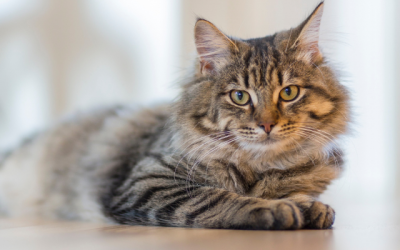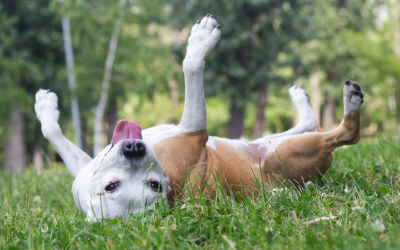Chicken Care FAQs
Feeding
What should I feed my chicken?
Once you have decided which age group of chicken you are getting you can then consider which food you will need to feed. Chicken ages are broadly grouped into starters (baby chicks to roughly 8 wks old), Growers (8 wks old until around 18-24 wks old) and Layers which is anywhere from 18-24 wks old on which is when they are starting to lay.
The basis of a poultry diet should be a good quality commercial feed. These are usually divided into:
- Starter diet (hatch – 6 weeks): 22% protein
- Grower diet (6 -18 weeks i.e. point of lay): 14-16% protein;
- Layer diet (18 weeks+): 15-18% protein
Some other important considerations for you:
- It is important to make sure their diet is free of contaminants and mould
- Their diet can be supplemented with vegetable kitchen scraps and garden plants
- It is illegal to feed animal matter, you can however feed commercially prepared meals containing animal meal
- Many commercial diets are medicated with coccidiostats (helps reduce a common parasite) – these medicated chicken feeds are toxic to turkeys and peafowl though and should not be fed to them
- Shell grit is often used to supplement the diet of layers
- Food and water should be provided in easily cleaned containers, with sufficient space (approximately 10cm/bird) so that all of the chickens can eat or drink at the same time
- On average, chickens will drink 400mls water per day, and eat 120g of food roughly.
Parasite Prevention
Do I need to give my chicken any regular worming, mite, lice protection?
Yes, every 6 – 8 months for worming if you have a lot of chickens and regular inspection of feathers and around vent for other external parasites is required. Common Pests that may affect your new chickens include external parasites such as:
- Lice
- Blood sucking mites
- Scaley leg mite
- Stick fast fleas
- Ticks
Most of these are treated using various pyrethroid sprays and cleaning housing and filling cracks and crevices in the housing structure. Paraffin oil or ivermectin can be used to treat scaley leg which is one of the most common external parasites we encounter but withholding periods for being able to eat eggs applies if using ivermectin.
Internal parasites include several worms which can be treated with levamisole (contact us for particular products) if an infection is found – usually animals will present with diarrhoea, often bloody, weight loss, lethargy, and pale combs.
Housing
Are there any housing requirements if you own chickens?
There are various council regulations with regards to keeping your own backyard flock of chickens. Wollongong city council has different rules depending on what your land is zoned as. Most details can be easily found on their website (https://www.legislation.nsw.gov.au/view/html/inforce/current/epi-2008-0572#pt.2-div.1-sdiv.21).
The key points from their website are below:
- Chickens must not be kept within 4.5m of a school/dwelling/public hall that sells prepares or manufactures food
- Roosters not allowed in residential areas
- The amount of chickens you can keep varies for different areas, some allow up to 5 chickens, some up to 10.
- Chicken enclosure must be escape proof
When thinking about the housing for your new chickens, it is important to consider that each chicken needs space to move about, nest, dust bath and flap their wings. Think about the size of your backyard and where you might like to put your chicken coop – ideally this area should be a site that has good drainage, but not too close to neighbours.
- The minimum floor area recommended is 3m2 for 3 hens, each additional hen should have extra 0.4m2 floor area
- Nest boxes should be located in the cooler side of the shed, roughly 60-90cm off the ground
- Nest boxes- 30cm x 30cm box for 4 hens
- Nest material should be shell grit, straw or shavings and at least 7.5cm deep
- Flooring – ideally concrete with deep litter ( 10-15cm of shavings, straw or hat that is changed regularly) or can have a portable A-frame type enclosure that is moved around the yard regularly
- Perches – Roosting perches made of 75 mm x 50 mm dressed (not treated) timber placed 500 mm from the floor are usually appreciated by chickens. If used, at least 150 mm of roost space per bird should be provided
- Need to make sure your enclosure is secure – want to make sure it is bird proofed to reduce predation but also so can limit contact from wild birds that could harbour disease.
- Chickens do like to move about and dust bath themselves so making sure adequate space as mentioned previously is very important
- Chicken coops are commonly made out of wire/metal and timber frames. Trying to limit any cracks/crevices between areas of the shed is important in limiting places for external parasites to hide. It is important to note though that while we are trying to reduce places for parasites and draughts, the shed still needs to have good ventilation
- Litter should be dry and clean and changed regularly depending on how soiled it is looking.
- Young chickens (baby chicks to 8 wks old) – consider heat laps/indoor location.
Egg Laying
Do you have any advice regarding egg laying in chickens?
- If you want to have eggs fairly soon after setting up your flock it is best to get chickens at 18 wks of age or older.
- Generally, hens will lay best when the shed temp is between 10-32°C – they become quite stressed at temperatures above or below this.
- Hens need an area that makes them safe and secure for at least 30 minutes as that is the time generally taken to lay an egg.
- Collect eggs daily.
Common Conditions
Are there any common conditions I need to watch out for in my chickens?
Yes, there are. Please see below a list of common conditions to look out for.
GASTROINTESTINAL DISEASE:
Signs to watch out for include:
- diarrhoea
- weight loss
- blood in the faeces
- swelling around the area of the crop
- changes to food or water consumption
- lethargy
- not doing their normal behaviours
Common causes can be various protozoa and worms – infection usually occurs from other infected animals or their water becoming contaminated from wild birds. Prevention is generally aimed at maintaining good hygiene (so keeping water and feed containers clean, changing soiled litter regularly) and keep away from wild birds. Also, quarantine new arrivals for a minimum 10 days to ideally 3 wks in a separate chicken coop.
RESPIRATORY DISEASES
Signs to watch out for include:
- sneezing
- coughing
- nasal discharge
- open mouth breathing
- reduced feed and water intake
- lethargy
Common causes are viral, bacterial or mycoplasma.
For the viral causes: some diseases can be vaccinated against in the face of an outbreak however this is not done preventatively as some significant reactions have been seen with the available vaccine, however, Marek’s disease is advised to be vaccinated against if able to source the vaccine from 1 day old.
Antibiotics may be required for some diseases (bacterial and mycoplasma), good hygiene, separating out infected animals and nursing care ensuring they are still eating – often by making a moistened mash of chicken feed for them to eat can be helpful.
Good hygiene involves keeping water bowls off the floor, regular cleaning/ changing of litter, making sure wild birds can’t contact your flock and making sure wild bird droppings can’t contaminate food/water bowls.
REPRODUCTIVE DISORDERS
Egg bound – eggs usually laid every 24-36 hrs (straining and difficulty breathing) – you can try some home remedies – warm bath with her standing for 15 – 20minutes, apply paraffin in and around vent –be very gentle – you don’t want to crack the egg (if it already hasn’t) – if no improvement – your chicken will need veterinary treatment.
PODODERMATITIS (bumblefoot)
Inflammation of the skin of the bottom of the foot – can be swollen/inflamed up to deep nasty ulcers.
Causes – trauma from poor perch design, lameness in the other leg, not enough vitamin A, obesity, long periods of inactivity – your chicken will need veterinary treatment.
Book an appointment today!
Latest News
Feline Cat Osteoarthritis
Osteoarthritis is a common condition that affects cats, just as it does dogs. In fact, up to 40% of cats may suffer from osteoarthritis, particularly those over 8 years old. While cats often show very subtle or no changes in behavior when they are in pain, it is...
Pet Anxiety
Anxiety is a common issue among pets and is being diagnosed more frequently as pet owners become more aware of the signs to look out for. The past few years have contributed to an increase in pet anxiety as many animals have become used to their owners being home all...
Summer Allergies
Allergies are one of the most common conditions we see in our dogs in the Spring and Summer every year. If your dog suffers from allergies you may notice any of the following symptoms / clinical signs: Licking their feet Chewing their feet Scratching their ears,...



